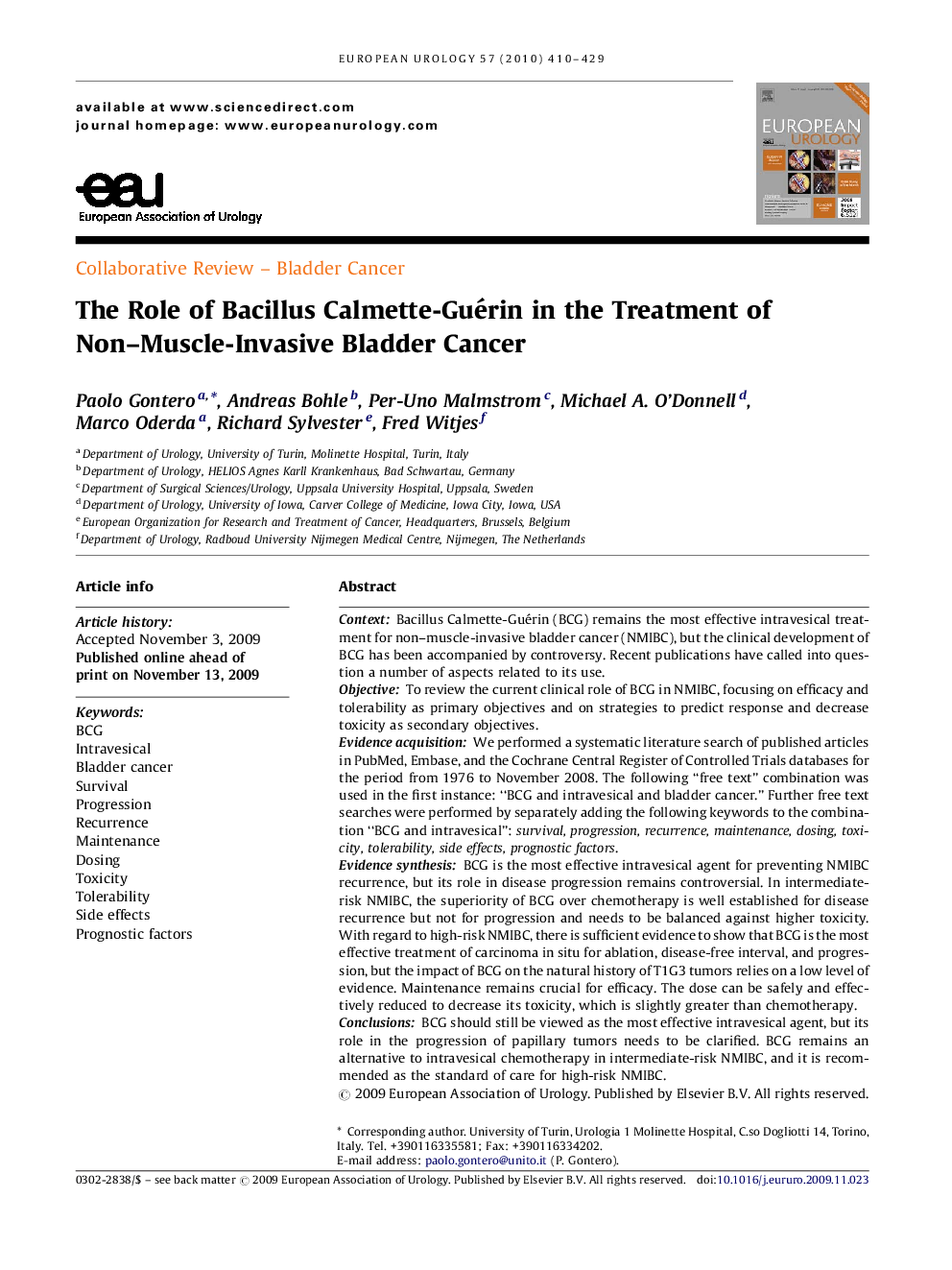| کد مقاله | کد نشریه | سال انتشار | مقاله انگلیسی | نسخه تمام متن |
|---|---|---|---|---|
| 3926978 | 1253160 | 2010 | 20 صفحه PDF | دانلود رایگان |

ContextBacillus Calmette-Guérin (BCG) remains the most effective intravesical treatment for non–muscle-invasive bladder cancer (NMIBC), but the clinical development of BCG has been accompanied by controversy. Recent publications have called into question a number of aspects related to its use.ObjectiveTo review the current clinical role of BCG in NMIBC, focusing on efficacy and tolerability as primary objectives and on strategies to predict response and decrease toxicity as secondary objectives.Evidence acquisitionWe performed a systematic literature search of published articles in PubMed, Embase, and the Cochrane Central Register of Controlled Trials databases for the period from 1976 to November 2008. The following “free text” combination was used in the first instance: “BCG and intravesical and bladder cancer.” Further free text searches were performed by separately adding the following keywords to the combination “BCG and intravesical”: survival, progression, recurrence, maintenance, dosing, toxicity, tolerability, side effects, prognostic factors.Evidence synthesisBCG is the most effective intravesical agent for preventing NMIBC recurrence, but its role in disease progression remains controversial. In intermediate-risk NMIBC, the superiority of BCG over chemotherapy is well established for disease recurrence but not for progression and needs to be balanced against higher toxicity. With regard to high-risk NMIBC, there is sufficient evidence to show that BCG is the most effective treatment of carcinoma in situ for ablation, disease-free interval, and progression, but the impact of BCG on the natural history of T1G3 tumors relies on a low level of evidence. Maintenance remains crucial for efficacy. The dose can be safely and effectively reduced to decrease its toxicity, which is slightly greater than chemotherapy.ConclusionsBCG should still be viewed as the most effective intravesical agent, but its role in the progression of papillary tumors needs to be clarified. BCG remains an alternative to intravesical chemotherapy in intermediate-risk NMIBC, and it is recommended as the standard of care for high-risk NMIBC.
Journal: European Urology - Volume 57, Issue 3, March 2010, Pages 410–429